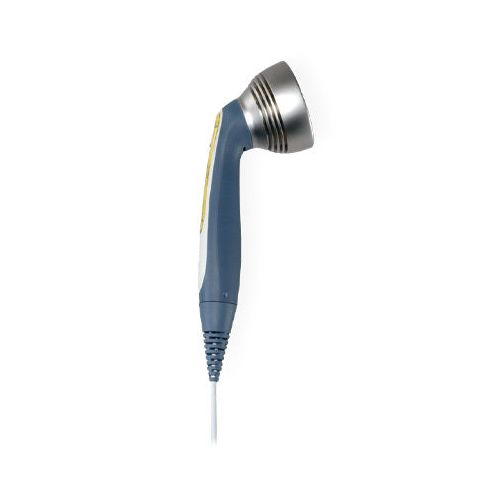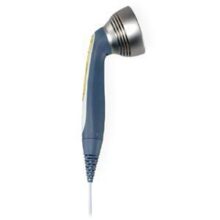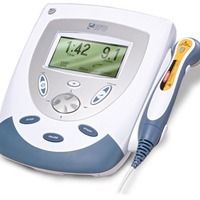Laser Diodes
Laser diodes emit coherent and monochromatic light with a single wavelength. Low Level Laser Therapy (LLLT), utilizes low-intensity laser light to stimulate cellular processes and promote tissue healing and pain relief. Laser therapy is effective in addressing specific medical conditions, such as musculoskeletal injuries, chronic pain, and wound healing.
Light Emitting Diodes
LEDs (Light-Emitting Diodes) emit non-coherent, polychromatic light with various wavelengths. LED therapy is versatile and can be used for a wide range of applications, including skin rejuvenation, wound healing, pain management, and general wellness. LEDs are also known for their ability to penetrate superficial tissues, making them suitable for surface-level treatments.
9 Diode Cluster Applicator: Overview of Key Features
- Laser Diodes: Laser diodes emit coherent, focused light at a specific wavelength. This type of light is often used for laser therapy or low-level laser therapy (LLLT). Laser therapy is known for its ability to penetrate deeper into tissues and stimulate various biological processes. It can promote tissue repair, reduce inflammation, and provide pain relief.
- LEDs (Light-Emitting Diodes): LEDs emit non-coherent, diffused light at specific wavelengths. LED therapy, also known as photobiomodulation or LED light therapy, typically utilizes broader wavelengths of light. LEDs are used to stimulate cellular activity, improve circulation, and reduce pain and inflammation in superficial tissues.
- Multiple Diodes: In this 9 diode cluster applicator, both laser diodes and LEDs are combined within the same applicator. The cluster may contain several diode sources of varying wavelengths, allowing for targeted treatment and versatility in addressing different conditions.
- Versatility: The presence of both laser diodes and LEDs in a cluster applicator such as this 9 diode cluster offers versatility in treatment options. Healthcare professionals can select the appropriate diode or combination of diodes based on the patient’s condition and treatment goals. For example, laser diodes may be chosen for deeper tissue penetration, while LEDs may be used for superficial tissue or surface-level treatments.
- Treatment Modalities: Multiple diode cluster applicators can be used for a wide range of treatment modalities, including pain management, wound healing, muscle rehabilitation, and skin rejuvenation. They are employed in various healthcare settings, including physical therapy, dermatology, sports medicine, and more.
- Customizable Treatment Protocols: Healthcare professionals can create customized treatment protocols by adjusting the diode selection, power output, and treatment duration to meet the specific needs of each patient. This flexibility allows for tailored and effective therapies.
- Ease of Use: Multiple diode cluster applicators are user-friendly and designed for ease of use. They often feature pre-set treatment protocols and user-friendly interfaces, making them accessible for both experienced practitioners and beginners.
In summary, a 9 diode cluster applicator combining laser diodes and LEDs provides healthcare professionals with a versatile tool for therapeutic applications. By offering a range of wavelengths and treatment options, it enables tailored and effective treatments for a variety of medical conditions, making it a valuable asset in clinical practice.






Commentaires
Il n'y a pas encore de commentaires